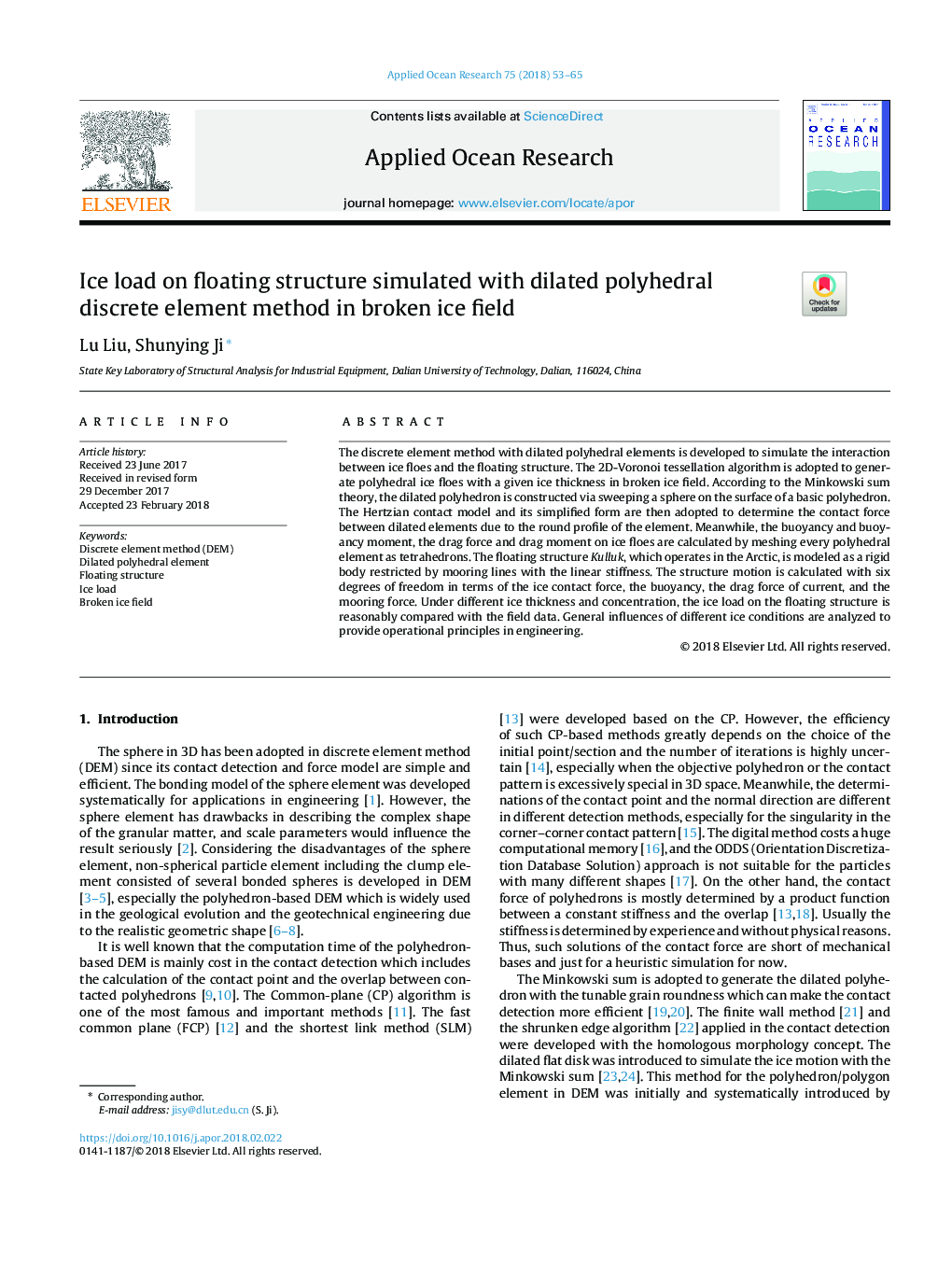| Article ID | Journal | Published Year | Pages | File Type |
|---|---|---|---|---|
| 8059260 | Applied Ocean Research | 2018 | 13 Pages |
Abstract
The discrete element method with dilated polyhedral elements is developed to simulate the interaction between ice floes and the floating structure. The 2D-Voronoi tessellation algorithm is adopted to generate polyhedral ice floes with a given ice thickness in broken ice field. According to the Minkowski sum theory, the dilated polyhedron is constructed via sweeping a sphere on the surface of a basic polyhedron. The Hertzian contact model and its simplified form are then adopted to determine the contact force between dilated elements due to the round profile of the element. Meanwhile, the buoyancy and buoyancy moment, the drag force and drag moment on ice floes are calculated by meshing every polyhedral element as tetrahedrons. The floating structure Kulluk, which operates in the Arctic, is modeled as a rigid body restricted by mooring lines with the linear stiffness. The structure motion is calculated with six degrees of freedom in terms of the ice contact force, the buoyancy, the drag force of current, and the mooring force. Under different ice thickness and concentration, the ice load on the floating structure is reasonably compared with the field data. General influences of different ice conditions are analyzed to provide operational principles in engineering.
Related Topics
Physical Sciences and Engineering
Engineering
Ocean Engineering
Authors
Lu Liu, Shunying Ji,
